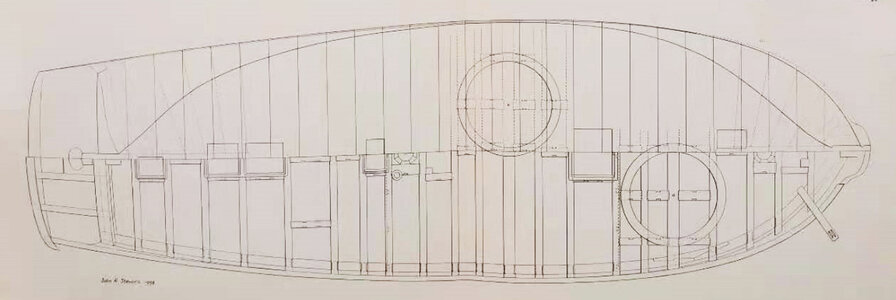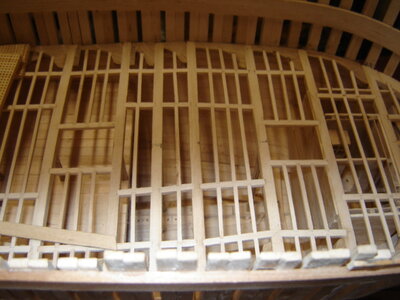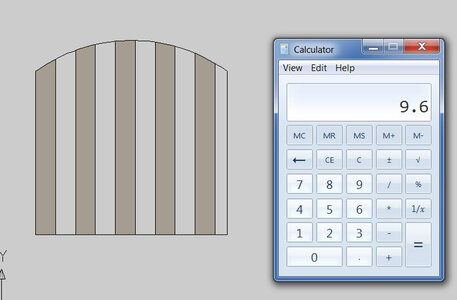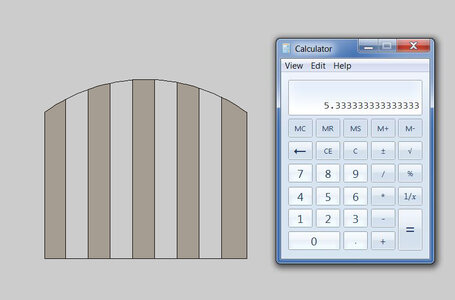I am also pretty sure, that the old shipwrights defined the space / distance between carlings and ledges based on the loads on the deck.
The deck loads mainly and also partly the structural loads were transfered from the deck planking into the ledges into the carlings and finally into the beams, which are founded on the frames - so all was defined by transfering loads into the structure. Timber was expensive and later also rare, (and also heavy) so I am pretty sure, that the shipwrights installed were necessary, but not more than necessary.....
Defintely it should be symetric to the middle axis.
I know some contemporary drawings at the NMM which are showing the carlings and ledges very good, so you may want to take a look
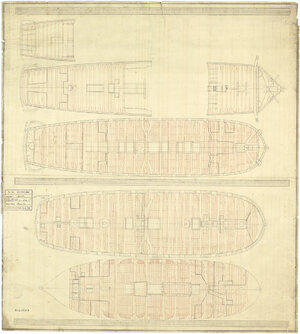
Scale: 1:96. Plan showing the roundhouse, quarterdeck, forecastle, upper deck, lower deck, and orlop deck for an unnamed 1745 Establishment 60-gun Fourth Rate, two-decker. The plan illustrates the knees, beam, carlines (carlings) and ledges used to construct the decks. No specific ship is mentioned except an un provenanced note for 'Weymouth' (1752). However, it could refer to 'Anson' (1747), 'Saint Albans' (1747), 'Tiger' (1747), 'Weymouth' (1752), 'Medway' (1753), and 'York' (1753).

collections.rmg.co.uk
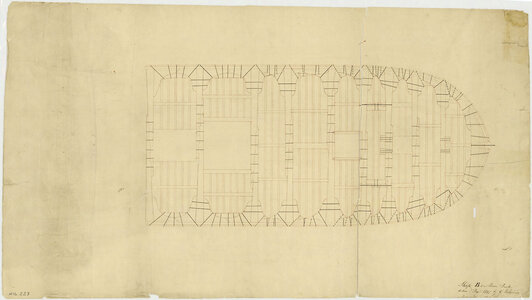
Probably 1:48. A plan showing the method of fixing the beams, knees, carlings and lodging knees for the forward half of the main deck of an unspecified merchant ship (fl.1797), as taken off by George Hilhouse in December 1797.

collections.rmg.co.uk
 . I'm doing the lower deck on the Discovery1789. According to the original drawing the deck beams are all different distances apart. It's in 1:48 but I'll use real measurements to maker it easier for me. The beams vary from 1" to 1 1/2" apart. The ledges have to have between 3/16 and 1/4" between them(not between centers). The ledges are 1/16" wide. Is there a method of doing the arithmetic to get the spacing even?
. I'm doing the lower deck on the Discovery1789. According to the original drawing the deck beams are all different distances apart. It's in 1:48 but I'll use real measurements to maker it easier for me. The beams vary from 1" to 1 1/2" apart. The ledges have to have between 3/16 and 1/4" between them(not between centers). The ledges are 1/16" wide. Is there a method of doing the arithmetic to get the spacing even?




